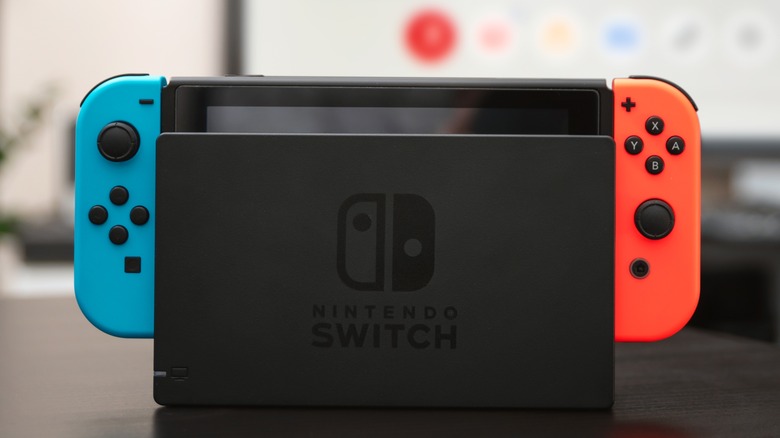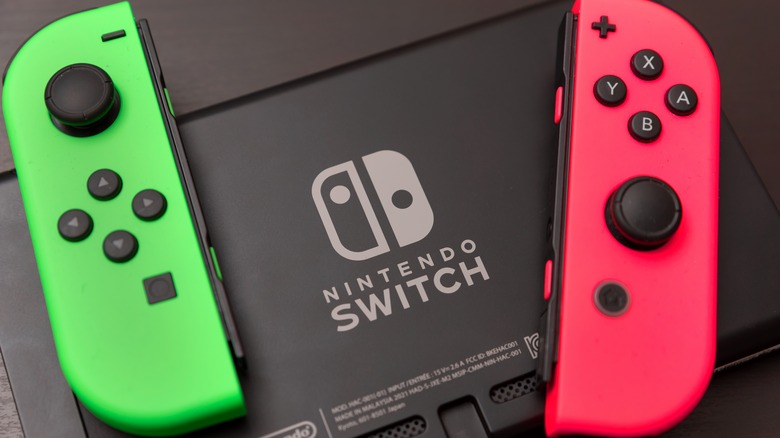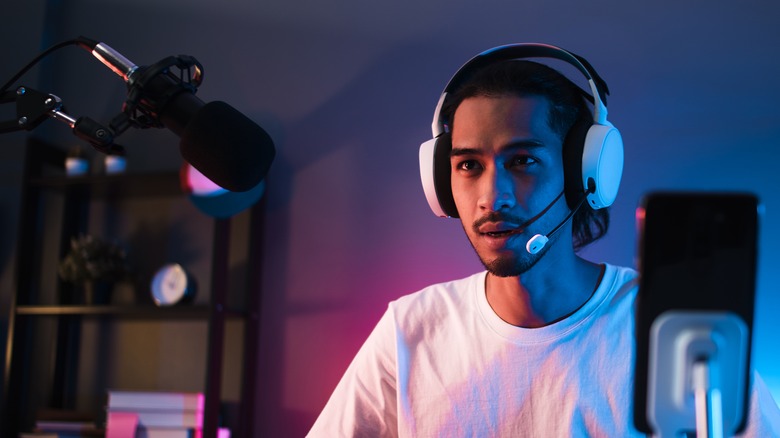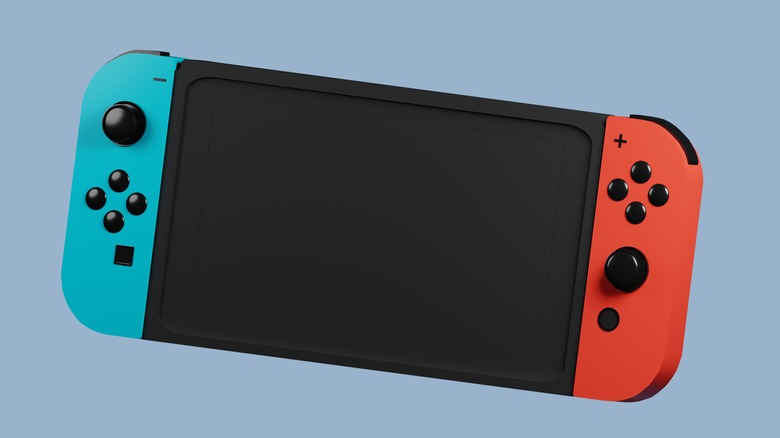Here's How To Livestream Games From Your Nintendo Switch
While there's a lot to love about the Nintendo Switch, it's not the most powerful or capable gaming system on the market. Unlike the Xbox Series X and PlayStation 5, for example, the Switch lacks a built-in streaming feature, but it's for a good reason: The hardware couldn't handle powering the game while simultaneously capturing and broadcasting video.
If that's the case, why would anyone want to stream gameplay from a Switch? Because it's a Nintendo console, and it's the only way to play many popular IPs and hit games spanning titles from "Animal Crossing" and "The Legend of Zelda" to "Splatoon" and, of course, "Super Smash Bros Ultimate."
Though it'll take a bit more effort when compared to the Xbox's dedicated streaming menu, it is possible to livestream your Switch gameplay sessions. If you don't already have the required hardware, you may be looking at spending a couple of hundred dollars to get started, but some budget options are available. As well, livestreaming gameplay from a Switch isn't possible with the Switch Lite variant, which lacks support for the dock and doesn't have A/V output capabilities.
Nintendo Switch livestream prerequisites: Hardware and software
Because the Switch can't handle the demands of livestreaming on its own, you'll need a computer that can pick up the slack. You can use a Windows PC, Mac, or Linux machine, as long as it has hardware sufficiently capable of broadcasting your gameplay. The computer must be paired with an accessory called a capture card, which is exactly what the name suggests: a peripheral that captures the video output from the Switch and funnels it to your PC, where it can be shared in real-time with others using compatible software linked with a platform like Twitch or YouTube.
Capture cards come in many varieties. Some models (internal) are designed to slot alongside other components within a desktop, while others (external) are designed to be connected externally, such as with laptops. The price will depend on both the brand and features offered by the card. Only some models support 4K video, for example. The model you'll need depends on your setup and streaming plans. For example, do you want to stream yourself as you play, including commentary from your microphone, or are you looking only to stream the raw gameplay footage? There's no shortage of affordable options on Amazon that can meet either need.
On the software side, you'll need an app that takes your various inputs — microphone audio, game audio, and both gameplay and webcam video feeds, for example — and combines them together into the video that your viewers will see. OBS is a very popular option, as it has robust features and is free, but there are other similarly popular alternatives like StreamYard, too.
How to set up a Nintendo Switch livestream
There are three core elements to get your Switch livestream up and running: setting up the computer, connecting the Switch, and configuring the software. The exact process will vary depending on your plans — if you're using a desktop but want to be visible in the broadcast, your setup may need to include an external webcam, for example. On the computer side of things, you'll need to install or connect the capture card, which typically involves connecting it to the PC using a USB cable and possibly also plugging in a dedicated power cable. Generally speaking, you'll need to:
- Turn on your computer and sign in.
- Download and install the streaming software you want to use.
- Plug in the capture card using its USB cable.
- Put the Switch in its dock.
- Plug the HDMI cable from the dock into the capture card's HDMI IN port.
- If you have a second monitor or TV, connect it to the capture card's HDMI OUT port.
- Turn on the Switch.
- Double-click the streaming app (e.g., OBS Studio) on your computer to open it.
- Link the streaming app with the destination platform using the stream key located in your account.
- Adjust the streaming app's settings if necessary, such as balancing the audio levels.
- Click the Start Streaming option to begin the broadcast. The exact name may be different in the app you're using.
- Launch a game on the Switch and start playing.
There are many variables in this process, and you may run into a roadblock at some point. For example, some capture cards may require you to install a driver, while others are plug-and-play. As well, you'll need to learn to use the streaming software you selected and how to manually configure your stream.
Ways to troubleshoot livestreaming on a Nintendo Switch
If you run into issues attempting to livestream your Switch gameplay, the good news is that the solution is likely simple, and basic troubleshooting steps may be all you need to fix it. For example, you should check all of your cables and hardware to make sure nothing is defective or damaged. If everything appears to be set up correctly, but you're not getting a video feed from the Switch on your computer, you should try a different HDMI cable before considering more drastic methods.
The fairly simplistic nature of the hardware setup used to livestream from a Switch means any issues you experience will likely boil down to how you have the streaming software configured. You may need to change the app's video input setting, for example, for it to detect the video feed piped from the Switch dock to the capture card. If the video feed appears correctly, but you can't hear the audio, you may simply need to turn up the volume for the Switch input, as the default setting may be too low. If the video shows up fine on your computer but isn't showing upon Twitch or whatever platform you're streaming on, you may not have entered the stream key or put it in the wrong setting menu.



